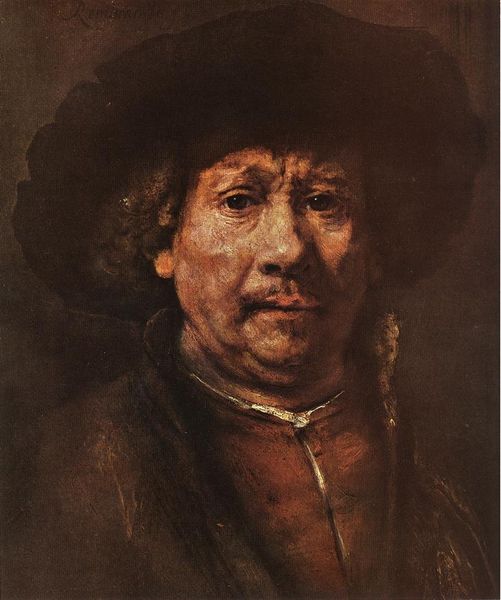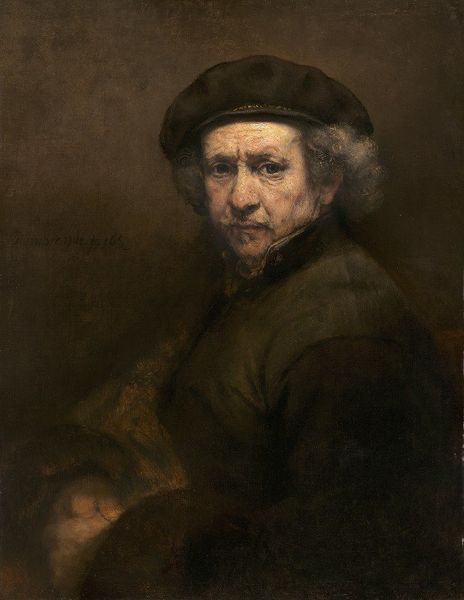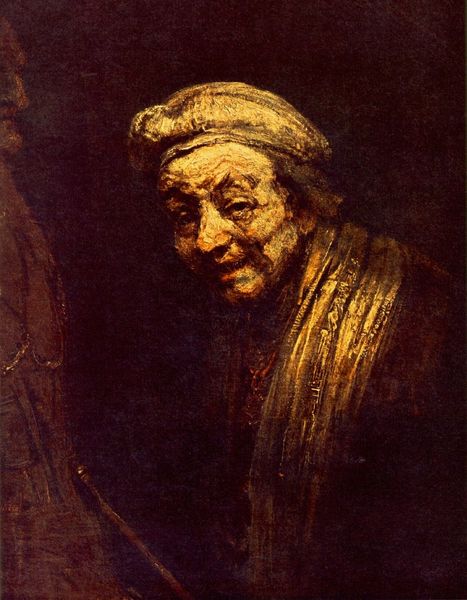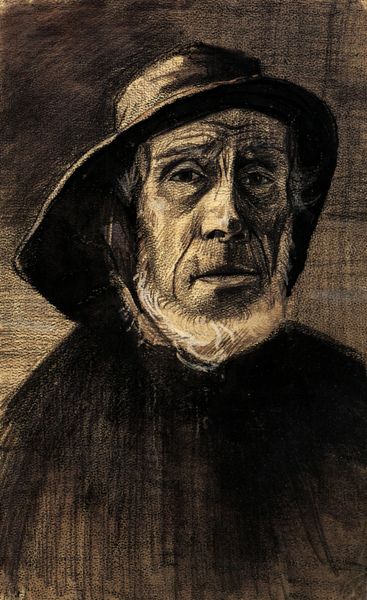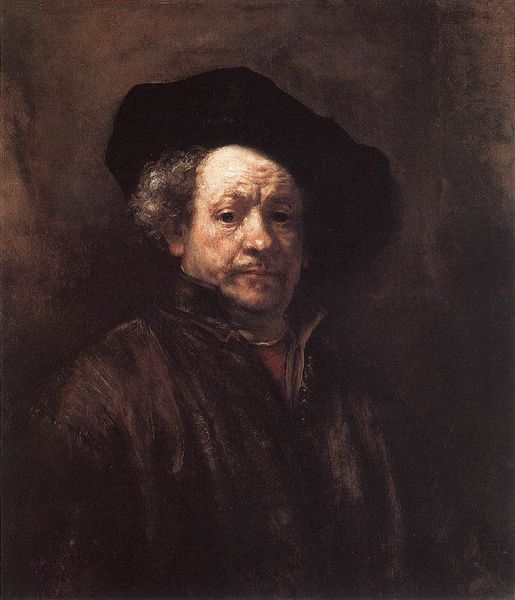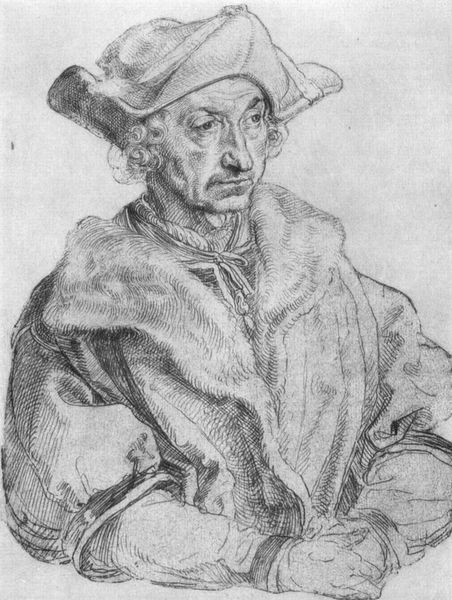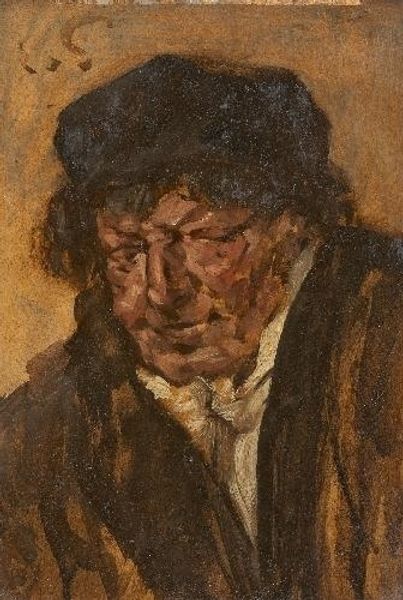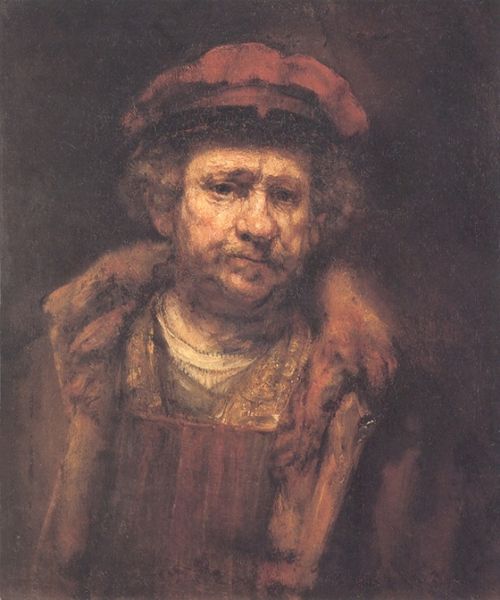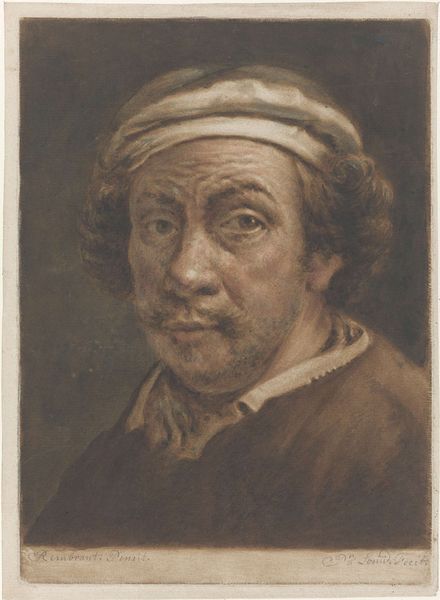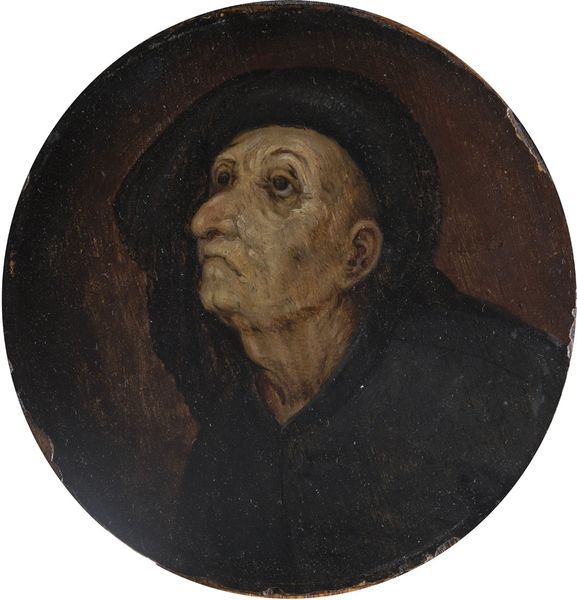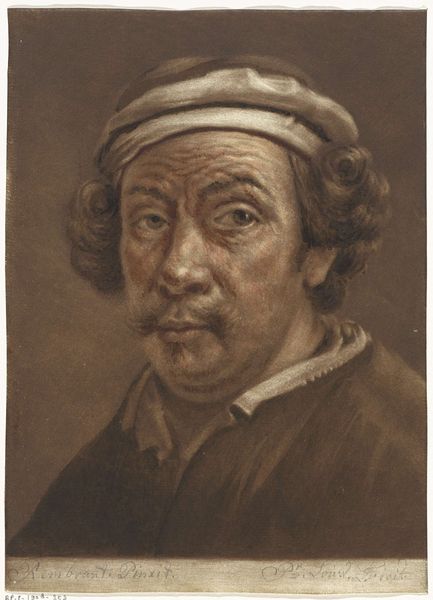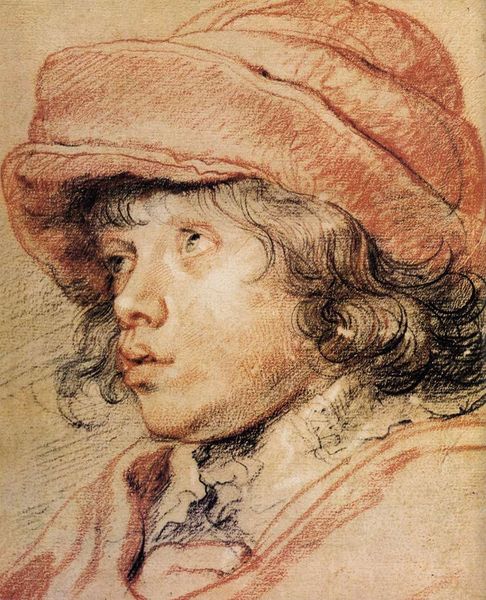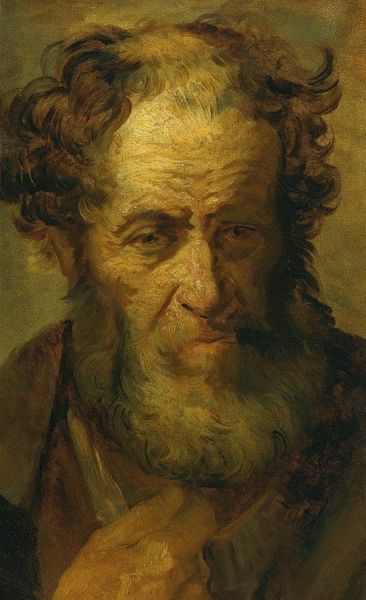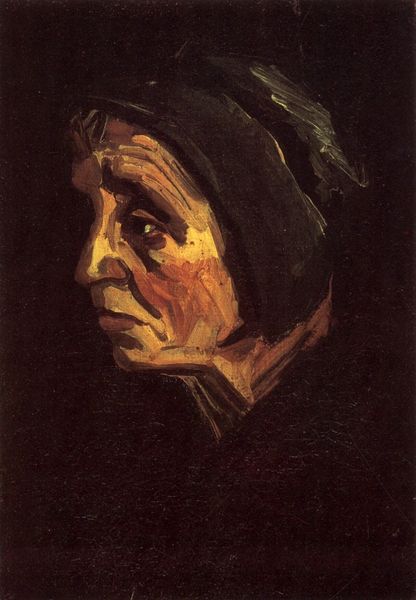
painting, oil-paint
#
portrait
#
self-portrait
#
baroque
#
portrait
#
painting
#
oil-paint
#
chiaroscuro
Copyright: Public domain
This is one of the many self-portraits Rembrandt van Rijn painted in the Netherlands throughout his career. The proliferation of self-portraits in 17th century Netherlands, where there was no longer a royal court to set the trends in art, is a fascinating phenomenon. The artists become their own patrons, using their own faces to explore different aspects of human nature, a concept that was very much en vogue at the time. But it also shows the professionalization of the artist, who becomes a brand in their own right. Here, the emphasis is less on surface likeness than on the revelation of character. You could see how Rembrandt, using a mirror as his reference, painstakingly analyzed his own physiognomy. The rise of museums and art history as disciplines in the 19th century gave these self-portraits a new status. It is this institutional history that shapes our interpretation of these images today.
Comments
No comments
Be the first to comment and join the conversation on the ultimate creative platform.
